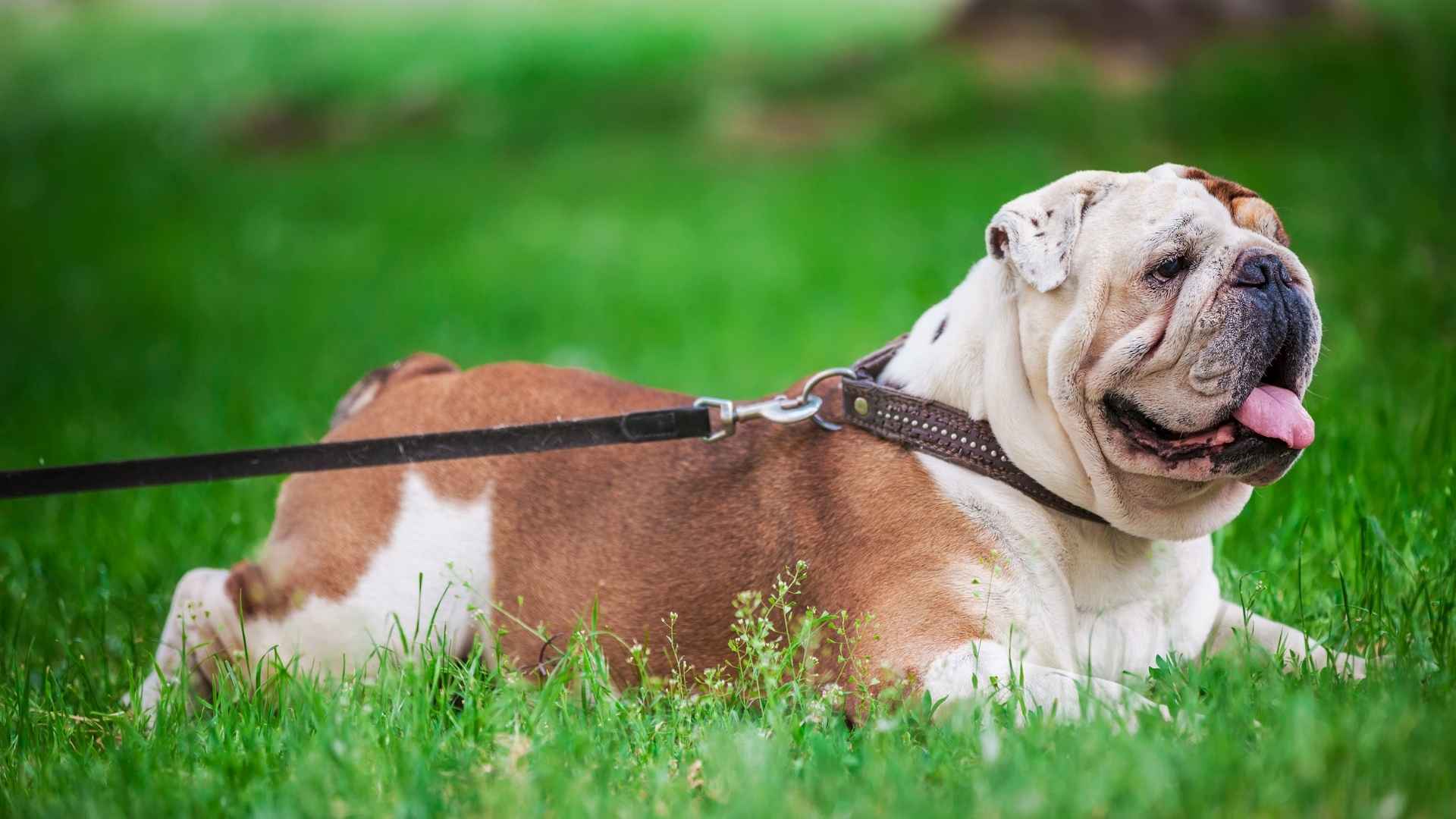In a fast-paced world, not every dog lover has the time or energy for a high-maintenance, hyper-focused pup that demands constant training or stimulation. Whether you’re juggling a hectic schedule, living in a smaller space, or simply prefer a more laid-back companion, low-focus dog breeds may be the perfect fit for your lifestyle. These dogs are typically content with simpler routines and don’t require endless mental challenges to stay happy.
While all dogs need care, attention, and love, some breeds are far more relaxed when it comes to training, playtime, and mental engagement. They may not excel at agility courses or master complex tricks, but what they lack in focus, they make up for in charm and companionship. Their easygoing personalities and modest needs make them great for first-time and busy owners, or anyone craving a furry friend who won’t constantly keep them on their toes.
From small lap dogs to surprisingly mellow larger breeds, low focus dogs come in a variety of shapes, sizes, and coat types. They’re ideal for people seeking loyal, loving pets who are happy just being part of your daily rhythm, without needing a job to do or a puzzle to solve every hour.
Low Focus Dog Breeds
1. English Bulldog
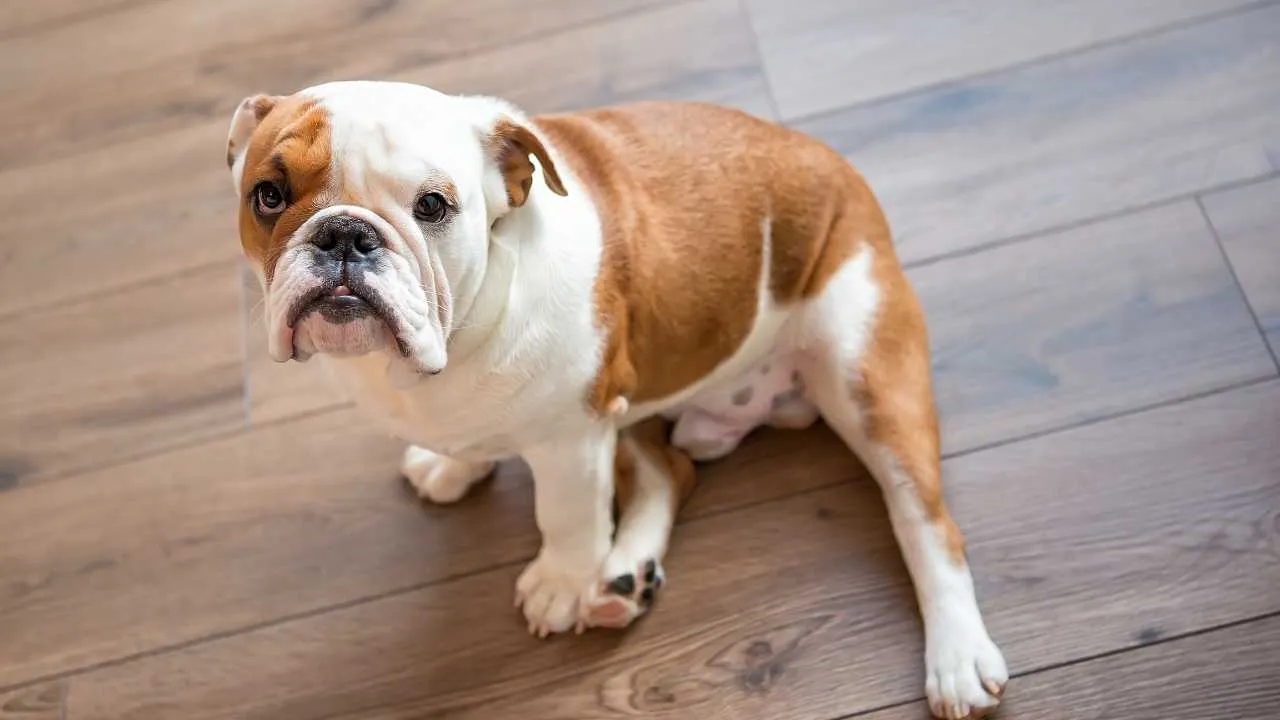
Despite their stout and somewhat gruff appearance, English Bulldogs are the epitome of easygoing charm. PetMD states that the English Bulldog is generally affectionate, devoted, and gets along well with both children and other pets. These medium-sized dogs, weighing up to 50 pounds and standing around 14 to 15 inches tall, are famously low-energy and perfectly content lounging beside their humans.
While they’re playful in short bursts, their calm demeanor makes them excellent companions for more relaxed households. With a loving temperament and a stoic yet goofy personality, Bulldogs often win hearts through their amusing snores and slow-paced antics.
Care Need
English Bulldogs require minimal exercise; a brief stroll or a gentle indoor game is usually sufficient. However, their flat faces (a brachycephalic trait) make them prone to overheating and breathing issues, so any activity should be done in cooler temperatures.
Weekly grooming is usually enough, but extra care is needed to clean between their skin folds to avoid infections. Because of their physiology, they may also produce notable snorting and snoring sounds, making them less discreet but undeniably endearing.
Fact: The English Bulldog is a low-energy breed known for being loyal, kind, and highly entertaining despite its health sensitivities and maintenance needs.
2. Basset Hound
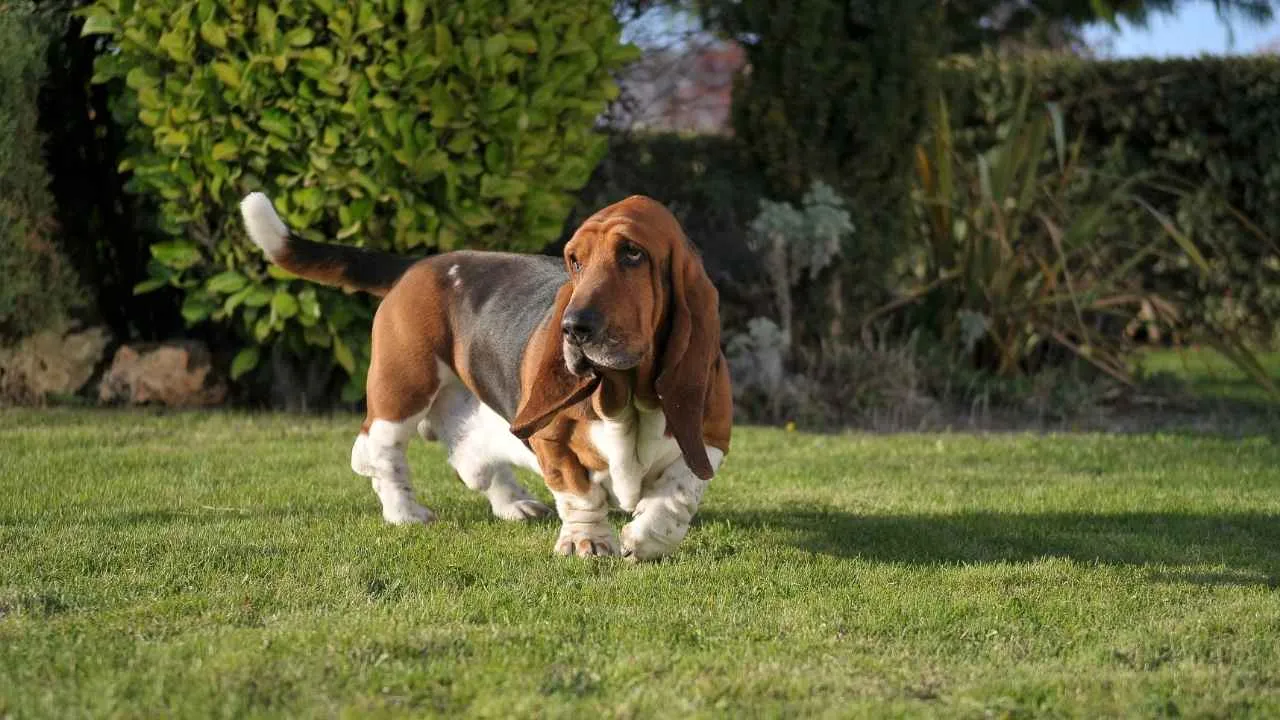
The Basset Hound epitomizes the phrase “laid-back companion.” Known for their droopy eyes, long ears, and a nose that never quits, these dogs are experts at relaxing but will gladly follow a scent trail if properly motivated. According to the AKC, the Basset Hound is one of the most charming and easily recognizable breeds, making it a long-standing favorite among dog enthusiasts worldwide.
While they enjoy a leisurely sniff around the neighborhood, they’re just as happy lounging indoors. Their independent nature means they don’t demand constant attention, and their lovable charm makes them an easy addition to any relaxed household.
Care Need
Despite their short coats, Basset Hounds do shed quite a bit. Weekly brushing with a soft grooming tool helps control shedding and keeps their skin healthy. These dogs also benefit from routine nail trimming and occasional baths.
While they don’t need intense daily workouts, a slow stroll and some scent games offer just enough stimulation. Mental enrichment like hide-and-seek with treats is a great way to engage their noses without overexerting them.
Fact: Though low-energy, Basset Hounds thrive when their scenting instincts are engaged through nose work and interactive games.
3. Greyhound

Despite their track record as lightning-fast racers, Greyhounds are surprisingly one of the laziest and most relaxed dog breeds around. Known as “45-mph couch potatoes,” they prefer lounging most of the day over vigorous activity. Hills Pet states that Greyhounds are among the oldest dog breeds, with origins dating back over 8,000 years as seen in ancient cave drawings.
Their quiet nature and gentle demeanor make them ideal for homes that value peace and minimal fuss. While they enjoy the occasional sprint, a short daily walk is more than enough to meet their exercise needs. Their soft, soulful eyes and affectionate personalities make them comforting companions, especially for people with calmer lifestyles.
Care Need
Greyhounds have very low grooming needs thanks to their short, sleek coats, which require only occasional brushing. However, because they lack body fat and have thin skin, they are sensitive to cold and need cozy, padded surfaces for lounging to prevent pressure sores.
These dogs are content with a brief walk or short sprint in a secure area and spend the rest of their day napping. They adjust well to relaxed households and can be left alone for short periods if properly acclimated.
Fact: Despite their athletic build, these dogs tend to rest and are happiest when they get plenty of time to lounge throughout the day.
4. Great Pyrenees
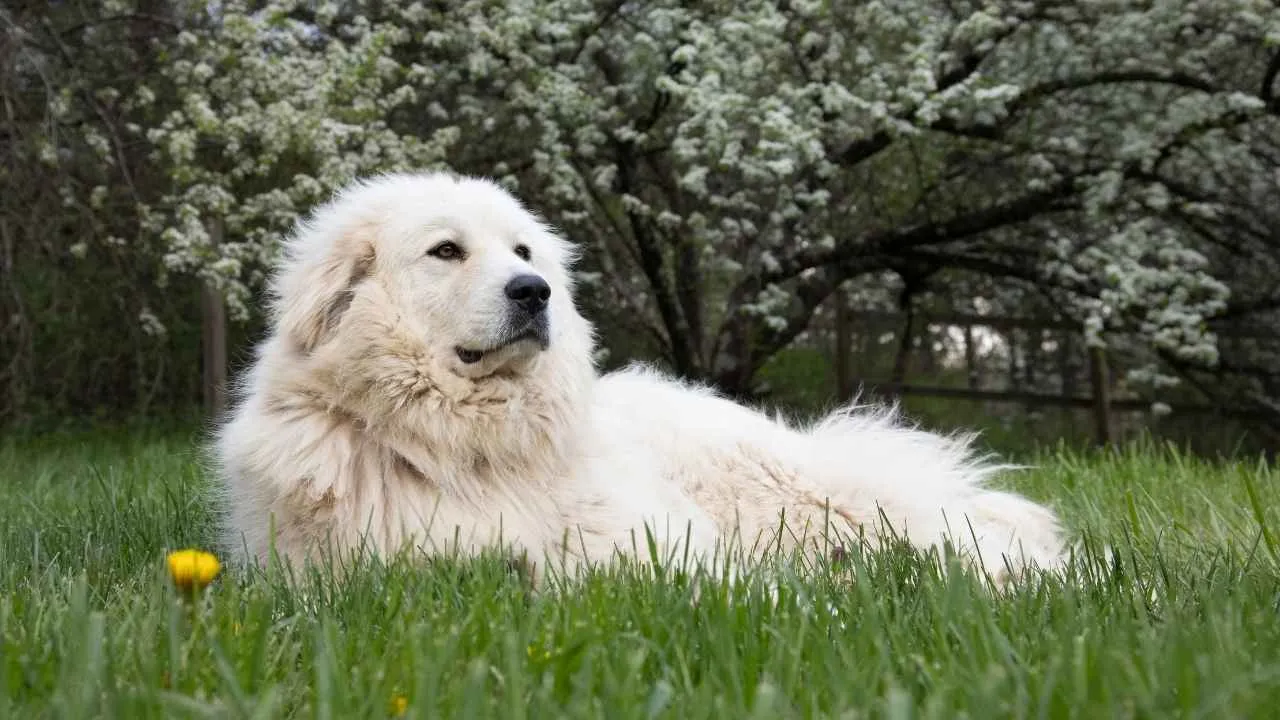
The Great Pyrenees is a calm, low-focus breed that belies its majestic size with a serene demeanor. Originally bred to guard livestock in the Pyrenees Mountains, this giant breed is surprisingly low-maintenance when it comes to energy levels.
While their imposing presence might suggest a high-intensity lifestyle, these dogs are content with a daily stroll and some peaceful lounging at home. Their independent nature makes them less clingy than other breeds, and they are quite comfortable entertaining themselves quietly.
Purina notes that although the Great Pyrenees may find obedience training dull, early socialization and training during puppyhood are essential due to the breed’s large size and instinct to be territorial with other dogs and unfamiliar people.
Care Need
Despite their thick double coat, Great Pyrenees dogs don’t require excessive grooming. Their weather-resistant fur is tangle-resistant, needing only a weekly brushing to manage shedding. However, they do shed year-round, so consistent upkeep helps maintain a clean environment. Pet parents should also be cautious of bloat, a condition common in large breeds.
Feeding smaller meals throughout the day and avoiding intense activity around mealtime can help minimize the risk. Their natural independence also means they don’t demand constant engagement, making them an excellent match for laid-back families.
Fact: Fossils of the Great Pyrenees date back to the Bronze Age, showcasing the breed’s ancient lineage and historical importance.
5. Irish Wolfhound
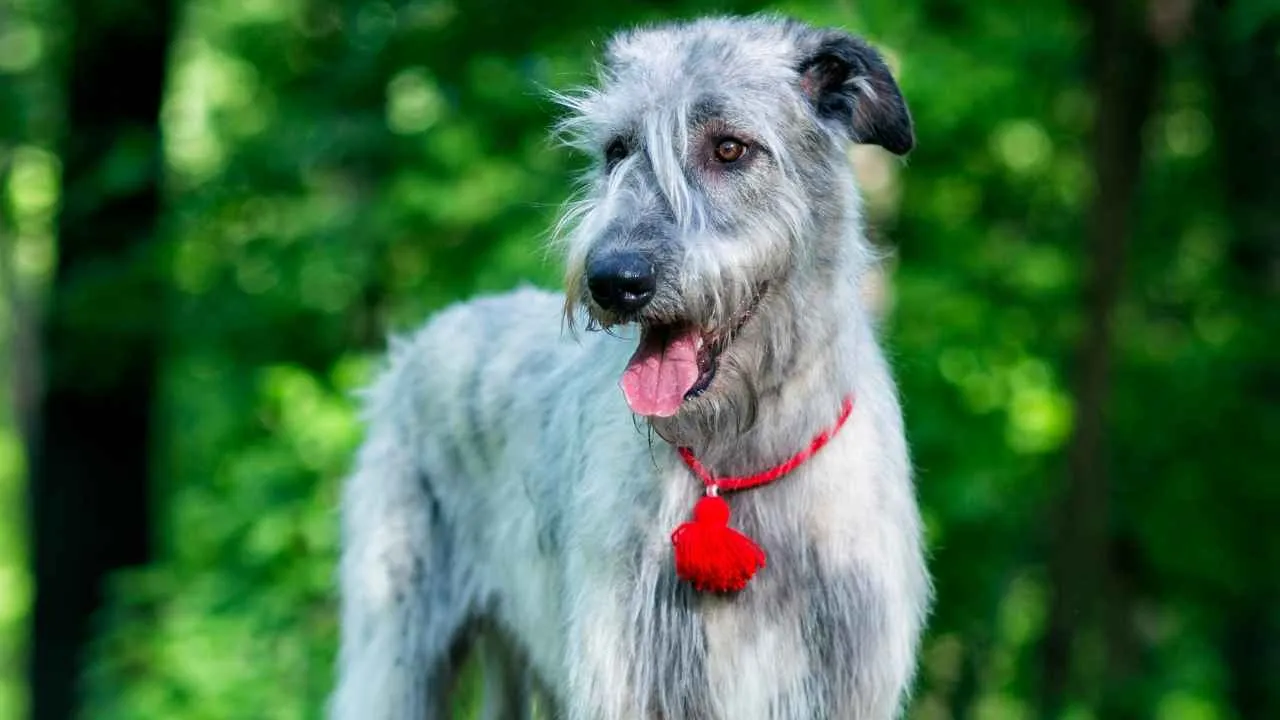
Irish Wolfhounds may appear imposing due to their grand stature, but their demeanor is anything but intense. Despite their historical roots as formidable hunters, today’s Wolfhounds are renowned for their calm and composed nature. These gentle giants are content to relax beside their humans for most of the day, making them excellent companions for households seeking a low-energy yet affectionate dog.
Care Need
While Irish Wolfhounds are low-maintenance in terms of temperament, their size requires thoughtful care. They need a high-quality diet suitable for large breeds, especially during growth stages. Exercise should be gentle; strenuous activity before or after meals is discouraged due to the risk of bloat.
Their coats require minimal grooming, but regular brushing helps minimize shedding. Additionally, make sure they have ample space to stretch and rest comfortably, as their large frames need adequate room.
Fact: The Irish Wolfhound is the tallest of all AKC-recognized breeds, combining ancient nobility with serene companionship.
6. Clumber Spaniel
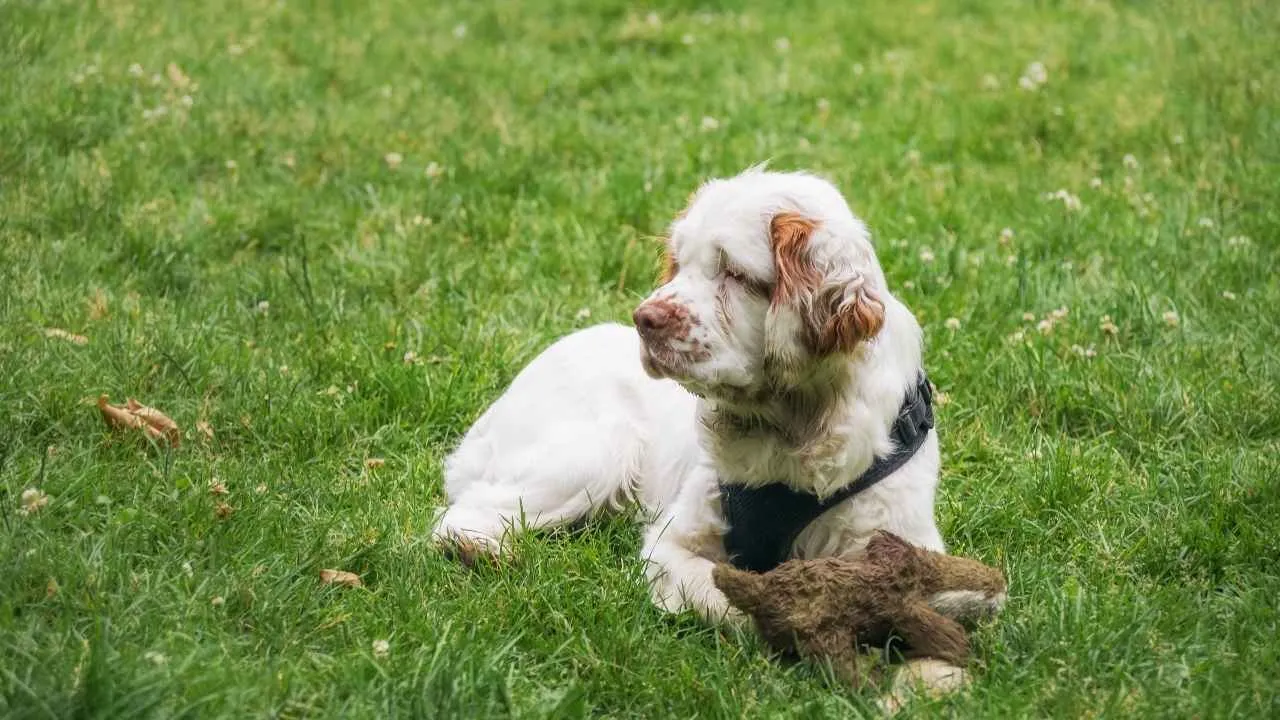
With a naturally relaxed attitude and an unhurried way of moving, the Clumber Spaniel is a quintessential example of a low-focus, low-maintenance breed. These large, heavyset spaniels are known for their mellow temperament and fondness for indoor lounging.
Despite their history as skilled bird dogs, Clumbers are more than happy to spend their days napping on the couch, emerging only for a gentle stroll or light play session. Their unflappable nature and low energy level make them a wonderful match for families or individuals seeking a calm canine companion.
Care Need
These low-maintenance dogs do best with light daily exercise, such as short walks or casual games in a fenced yard. While they have low exercise demands, their dense, soft coats require grooming several times a week to avoid matting.
Routine ear and eye care is also essential to prevent infections, given their droopy facial features. Though laid-back, they benefit from mental enrichment to prevent boredom. Socialization during puppyhood helps ensure their naturally docile temperament remains steady and friendly throughout life.
Fact: The Clumber Spaniel, despite its sleepy look, was originally bred for hunting and retains a playful streak when outdoors.
7. Saint Bernard
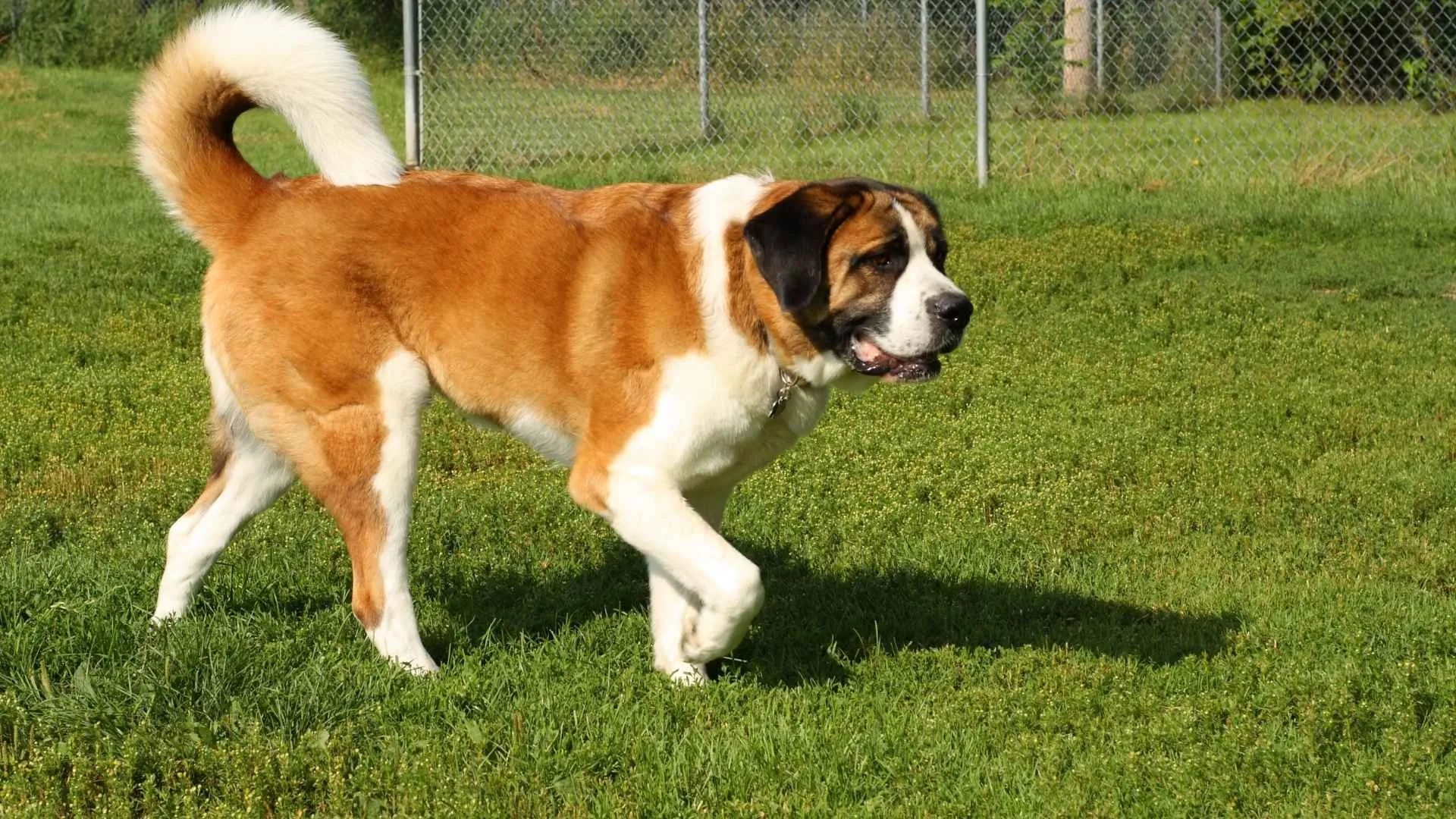
Known for their enormous size, females weighing up to 140 pounds and males reaching 180, these gentle giants defy their intimidating stature with a mellow, affectionate disposition. They’re one of the most famously low-energy breeds, preferring serene indoor environments and leisurely outdoor strolls.
While they can be playful during puppyhood, adult Saint Bernards lean into a slower-paced lifestyle that’s ideal for those seeking a relaxed canine companion. Their laid-back nature and tolerance make them excellent family pets, particularly for households with children.
Care Need
Though Saint Bernards don’t demand extensive physical activity, their care does require some diligence. Regular grooming is essential to manage their thick coats and minimize shedding. Feeding should be well-regulated, with adult dogs typically eating twice daily, preferably with veterinary guidance if homemade meals are provided.
Their dental hygiene needs daily attention, and their food and water bowls should be cleaned often to avoid bacterial buildup. Despite their love of lounging, they still need mental stimulation and moderate walks to stay healthy and content.
Fact: Saint Bernards enjoy moderate exercise like hauling loads or hiking in cool climates, but at home, they’re true couch companions.
Conclusion
Not every pup in the dog world is built for high-energy adventures or endless stimulation. While active dogs bring excitement and agility, low-focus dog breeds offer something equally valuable: calm companionship and easygoing charm. Whether you’re a busy professional, live in a small space, or simply prefer a slower pace, breeds like the Cavalier King Charles Spaniel and Chow Chows prove that serenity can be just as rewarding as spunk.
From the snore-filled naps of the French Bulldog to the quiet presence of a barkless dog like the Basenji, these breeds embrace relaxation without sacrificing affection. Even playful characters like the Boston Terrier have a manageable temperament, ideal for laid-back lifestyles. Choosing one of these mellow companions means less fuss and more cuddles, making them perfect for those seeking a loyal friend who thrives on calm rather than chaos. These dogs prove that being low-maintenance doesn’t mean being low in love or personality.


